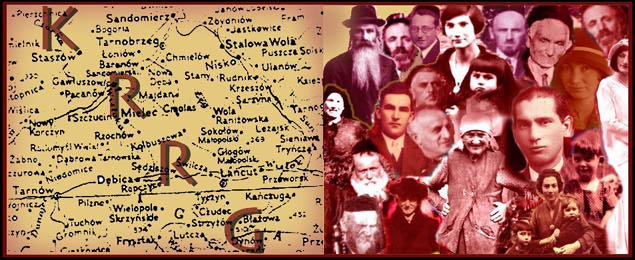


My Two Visits to Sokolów Malopolski
By Arye Barkai
Before going on my first visit to Galicia in 1981, I asked my second cousin, Sylvia Sapirstone, how to find the Jewish Cemetery in Sokolów Malopolski. Sylvia described how she had lived in Lwow (now Lviv in Ukraine, but in the 1930's it was part of Poland). She and her family would take the train to Rzeszow and from there a horse and buggy to Sokolów. She told me that as I enter Sokolów I will see a carp pond on my left and shortly afterward, I will see the cemetery.
So, after being in Rzeszow for several days, examining the archives there as well as in Kanczuga and Pouching, I told the desk clerk at the hotel where I was staying (the only hotel I was allowed to stay at) that I needed a taxi to Sokolów and to explain to the driver (who most likely would not be able to speak English) to take me to the Archive Office and the Jewish cemetery.
A relatively short drive brought us to Sokolów. To my delight I saw the carp pond on my left, just as my cousin had described. (later, back in the US, a cousin of my mother's described how, during a huge fire, one of her landsmen, jumped into the pond to save himself). First we went to the Archive Office. I showed a copy of the photo of my great grandparents, Avrum and Rivka Graber to the head archivist. My great grandparents dressed in typical nineteenth century traditional observant Jewish dress. They had gone to Rzeszow to pose for the photo. Although they lived in Sokolów, Avrum, my great grandfather, was known as "Der Reischer Schneider", the Rzeszower tailor.
It was obvious to the archivist that the couple in the photo were Jewish. Somehow, I understood her Polish when she explained that her father was Jewish (I don't know if her mother was a Jew or a gentile). Her father entered the office and said, "I know him! He's Itcha Graber." Itcha Graber was my cousin Sylvia's grandfather, but there must have been a close resemblance between Itcha and his father Avrum, my great grandfather. The archivist's father would have never known Avrum as Avrum had died in 1912. The archivist looked up my great grandmother's death date and found she had died in 1920; unfortunately, her parents' names were not listed. I was not permitted to browse through the archive folio as I had in Rzeszow. How much more information I would have found!
The old man took me to the cemetery which was in surprisingly good condition, except that some of the stones were tilting. The graves were marked in Hebrew with no surnames, so couldn't determine if anyone buried there was a collateral relative. I took many photos.
A year later I returned to Sokolów with my cousin Florence Marmor. We went to the Archive Office and asked the archivist if we could meet her father. "You want an appointment with my father?" she asked. Moments later, he entered the office and greeted us. Florence could speak to him in Yiddish. He took us to the cemetery but couldn't find the graves of Avrum or Rivka Graber. I later found out that this was the NEW cemetery - the old one was destroyed in the fire that had sent one of the shtetlnicks into the carp pond. Florence was charmed by the old man and his humor. She said he was Poland's secret national treasure.
We were directed to a building that we were told was the house of Avrum and Rivka. It was a two-story building that was now a bar. Later, Sylvia doubted that this could have been their home as she said there were only single story buildings in Sokolów when she had visited.
İ Copyright 2017 Kolbuszowa Region Research Group. All rights reserved.
Compiled by Joseph Faska and Susana Leistner Bloch
Back to Sokolów Shtetl Home Page | Back to KRRG Travelogue Page